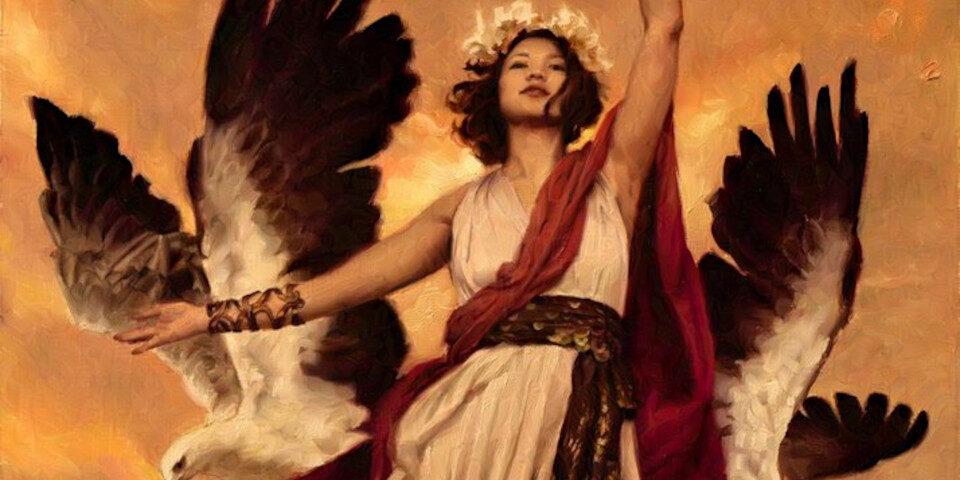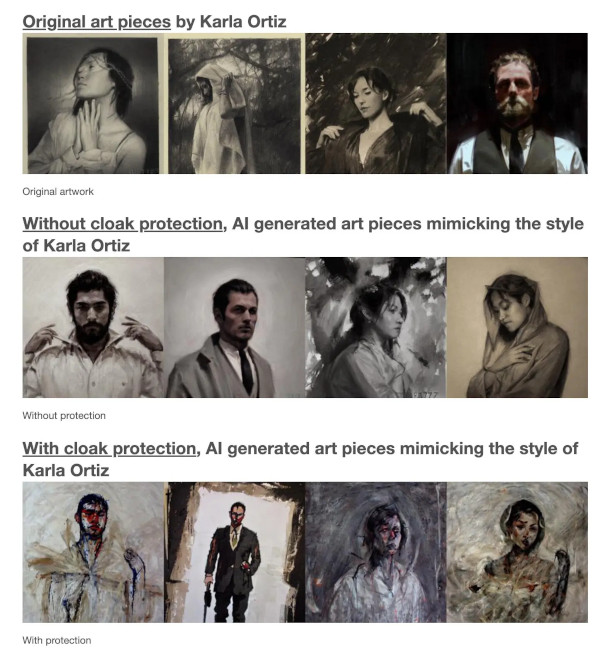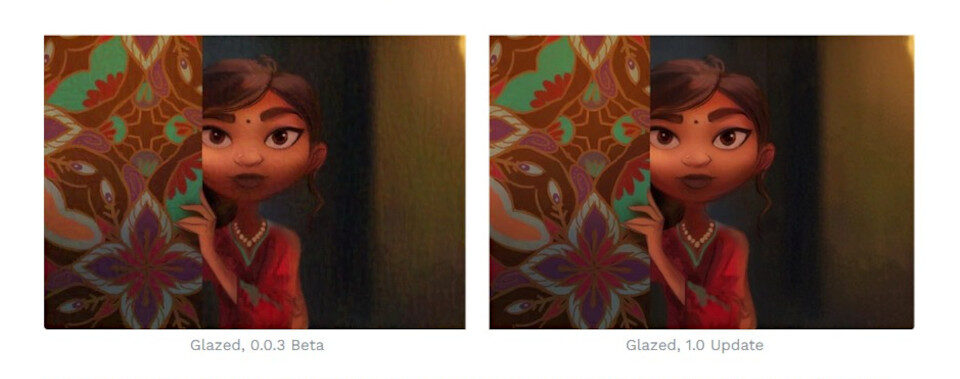Glaze protects artists’ images from ‘unethical AI models’

Part of Musa Victoriosa by Karla Ortiz: the “first painting released to the world that utilizes Glaze, a protective tech against unethical AI/ML models”. The software is now available to download free in beta.
Originally posted on 16 March 2023. Scroll down for details of the Glaze 1.0 release.
Researchers at the University of Chicago have released Glaze, a free tool intended to prevent the style of an artist’s online images being copied by generative AI art tools.
The machine-learning-based tool applies a ‘style cloak’ to images: barely visually perceptible changes designed to mislead generative models that try to learn the style of a specific artist.
A free tool intended to make it harder for AI models to learn artists’ styles from online images
The AI models behind new generative art tools like Stable Diffusion and Midjourney were trained on images scraped from the internet: something that has led to a class action lawsuit against their creators.
You can find a summary of the legal issues involved in for this article in The Verge.
Glaze is intended to make it harder for new AI models to learn artists’ personal styles from images in online galleries, by enabling artists to apply a ‘style cloak’ to the images they upload.
According to Glaze’s developers, AI models trained on cloaked images learn a different style to the artist’s own, making it more difficult to replicate through text-to-image prompts.
The tool is being developed by researchers at the University of Chicago in collaboration with artists including Karla Ortiz, one of the litigants in the class action suit.

Glaze makes it harder for AI models to learn an arist’s style from online art. Image provided by University of Chicago professor and Glaze team lead Ben Zhao for this article on Glaze in the New York Times.
Trades strength of protection against processing time and visible changes to the image
Glaze itself uses machine learning techniques to generate the style cloak, with the software’s Render Quality parameter determining how much compute time it spends searching for the optimal result.
Users can also set the Intensity of the style cloak, with higher values resulting in stronger protection but usually also more visible changes to the artwork.
According to the developers, art styles with ‘smoother surfaces’ like character design and animated art are “more vulnerable to protection removal” and require higher Intensity settings.
After an image is modified, Glaze checks the effectiveness of the result, and warns the user if it fails to offer enough protection.
Current limitations
Processing an image with Glaze requires a fairly powerful machine, and a fair amount of time: the highest Render Quality “takes around 60 mins per image on a personal laptop”.
That makes processing an entire online portfolio a significant investment of effort, with no absolute guarantee that the protection provided will not be bypassed by new AI models in future.
The development team describes cloaking images as a “necessary first step” until “longer term (legal, regulatory) efforts take hold”.
Glaze’s online FAQs provide more information on whether it will be possible for future AI models to circumvent the protection it provides, and are worth reading if you plan to use the software.
Interestingly, while cloaking images will not affect AI models trained on an artist’s existing images in online galleries, the FAQs suggest that uploading new cloaked images will reduce the accuracy with with AI art tools can reproduce that artist’s style in future updates to those tools.

An image by Oscar Araya ‘glazed’ using the beta version of the software (left) and Glaze 1.0 (right), the new stable release, which causes less perceptible change to the image.
Updated 28 June 2023: The Glaze development team has released Glaze 1.0.
As well as officially moving the software out of beta, the update reworks the core algorithm to better emulate human perception, focusing changes in areas of an image that will have less visual impact.
The result should be a less noisy-looking cloaked image: you can see a side-by-side comparison of the output of Glaze 1.0 and the original beta above.
In addition, the software should work better on images with large areas of flat colour or colour gradients, like comics, manga and anime.
Glaze also now offers “limited protection” against img2img tools, which generates an image based on a source image as well as a text prompt.
The developers have updated the online FAQs to discuss “img2img attacks” and attempts by other developers to bypass Glaze’s cloaking effect.
Licensing and system requirements
Glaze is available for Windows and macOS 13.0+. It supports both Intel and Apple Silicon Macs. The developers plan to launch a Glaze web service “later this summer”.
The software is free, and is available under a custom EULA.
